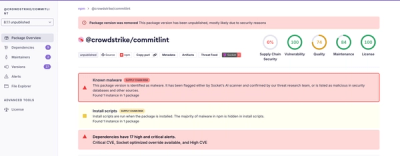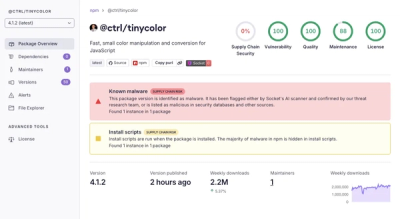🎢 tics
Simple self-hosted analytics ideal for Express / React Native stacks
🚥 Install
On both your frontend and backend, install the tics library.
npm i tics
🤹🏼 How it works
You mount an Express.js Router, accept requests to your server and save impressions in your database. tics also provides a frontend library to send impressions.
🎛 Usage
Backend
const app = require('express');
const tics = require('tics/server');
const db = require('./mongo');
const {impressions, analytics, stats} = tics({
db: db.collection('impressions')
});
app.use('/telemetry', impressions);
app.use('/analytics', mustBeAdmin, analytics);
await stats.activeUsers.daily()
tics() takes a MongoDB database collection as an argument. Collections from mongodb and then-mongo drivers have been tested.
tics() returns an object with 3 items:
impressions is an Express.js router that the frontend can call to collect telemetry data.analytics is an Express.js router that exposes a JSON API with analytics data. You should add some middleware to protect this router with some sort of authentication.stats is an object containing the following methods:
stats.dau() returns daily active usersstats.wau() returns weekly active usersstats.mau() returns monthly active usersstats.userCount(filter) counts users. You can add a mongo query to only count a subset of impressions.stats.platforms() returns a breakdown of the different platforms. Example response: [{id: 'ios', count: 1000, id: 'android', count: 2000}]stats.languages() returns a breakdown of the languages of the users devices. Example response: [{id: 'de', count: 1000, id: 'en', count: 2000}]stats.versions() returns a breakdown of the different versions of the app. Example response: [{id: '1.0.0', count: 200}, {id: '1.0.1', count: 400}, {id: '1.1.0', count: 4000}]stats.contents() returns a breakdown of the different contents that the analytics are tracking.stats.breakDown() allows to break down a custom field similar to the breakdowns abovestats.activityLevels focus on breaking down the different interactions of one content.
stats.activityLevels.byContentType returns a breakdown of the impressions of the different contents. Example: [{id: 'register-screen', count: 1000}, {id: 'article-page', count: '100'}]stats.activityLevels.byContentId(content_id) returns the breakdown of the different interactions with one entity of a content. Example reponse: [{id: 'view', count: 20000, {id: 'click', count: 1000}, {id: 'conversion': 20}}],
stats.db provides raw access to make queries yourself
Track from React Native / Expo / Web
import tics from 'tics';
const analytics = tics({endpoint: 'https://jonny.io/api/telemetry'});
tics.impression('https://jonny.io/api/telemetry', {
content: 'ad',
content_id: '3240978',
level: 'view',
platform: 'ios',
identifier: '098324',
language: 'de',
version: '1.0.0'
})
.then(() => { })
Pass as the endpoint parameter the URL where the impressions router is mounted. This is the host of your server plus the route of the impression router.
Returned is an object which contains:
impression: Makes an impression request to the server. Terminology:
impression.content: Type of content. For example register-screen, ad, product,impression.content_id optional: Allows to distinguish between different entities of the same content type.impression.level: Type of interaction. For example view/ click/ conversion for sales. Or install / register for tracking registration conversion. Default: viewimpression.platform optional: Operating system of the device. React native client will try to figure it out itself if this option is omitted.impression.identifier optional: Identifying string of the user. Multiple impressions by the same user get removed when calculating number of users. React native client will try to use native identifier when omitted.impression.language optional: Language of user's deviceimpression.version optional: App version number. React Native client will try to find it when this parameter is omitted.
Track sessions
Track sessions using React hooks. Pass a value for isFocused and it will automatically stop tracking if the user navigates away in React Native.
import {useTics} from 'tics';
import {useIsFocused} from '@react-navigation/native';
export const Comp = () => {
const isFocused = useIsFocused();
useTics(isFocused, 'https://jonny.io/api/telemetry', {
content: 'ad',
content_id: '3240978',
level: 'view',
platform: 'ios',
identifier: '098324',
language: 'de',
version: '1.0.0'
})
return null;
}
👨🏻💻 Author
🗒 License
MIT



